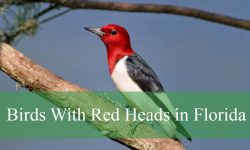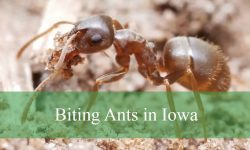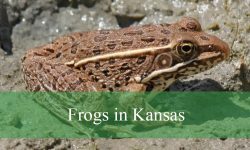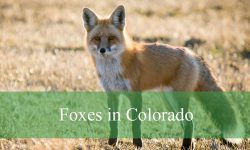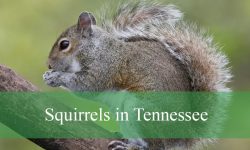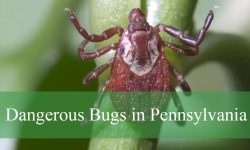If you spend time outdoors in North Carolina, you’ll quickly notice how active and diverse the rodent population is across the state. From the mountains to the coast, these small mammals thrive in forests, grasslands, wetlands, and even city parks, each species adapted to its own unique environment.
Rodents play a key role in nature by spreading seeds, aerating soil, and serving as food for many predators. However, some species have learned to live close to humans and may cause problems when they move into homes, gardens, or farmlands. Recognizing their characteristics helps you understand both their benefits and the challenges they bring.
This detailed guide introduces 15 rodents commonly found in North Carolina, featuring their appearance, behavior, and habitats. With clear descriptions and identification tips, you’ll be able to tell apart squirrels, voles, rats, and other species that make up the state’s rich and fascinating rodent community.
Types of Rodents Found in North Carolina
Eastern Gray Squirrel (Sciurus carolinensis)
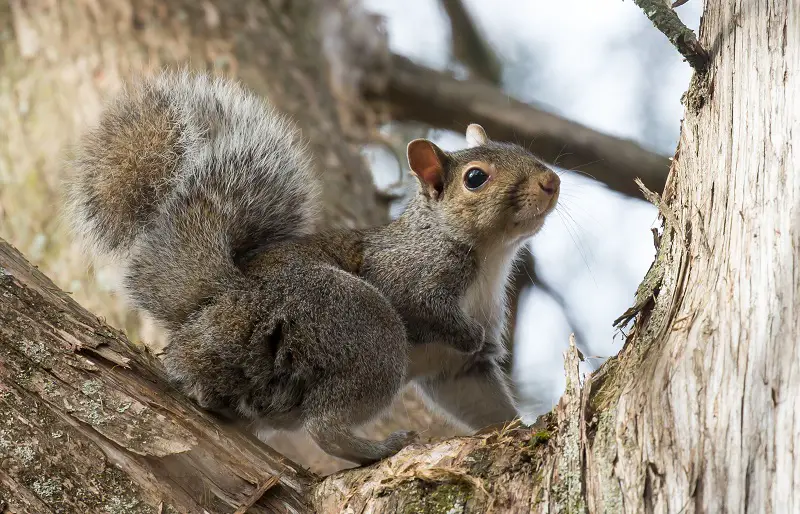
The Eastern Gray Squirrel is one of the most common and easily recognized rodents in North Carolina. It has a long, bushy tail, silver-gray fur with white underparts, and large dark eyes. These squirrels thrive in a variety of environments, including hardwood forests, suburban yards, and city parks, where oak and hickory trees provide abundant food. They are active year-round and can be seen leaping from branch to branch or scampering across lawns in search of acorns and seeds.
Their diet mainly consists of nuts, seeds, buds, fruits, and fungi, but they will occasionally eat bird eggs or insects when food is scarce. Eastern Gray Squirrels are known for their habit of burying nuts in the ground, which helps in forest regeneration as many forgotten seeds sprout into new trees. They use their keen sense of smell to recover cached food even under snow or leaf litter.
These agile climbers construct leafy nests called dreys, typically placed high in trees for protection from predators. Some individuals also take over tree cavities, especially during winter. They communicate using a mix of tail flicks, body postures, and vocalizations such as “chucks” or “quas” to warn others of potential danger.
Eastern Gray Squirrels are diurnal, most active in the morning and late afternoon. They adapt well to urban environments and can coexist closely with humans. Despite occasional conflicts with homeowners over bird feeders or gardens, they remain a beloved symbol of North Carolina’s diverse wildlife and play an important role in seed dispersal.
Southern Flying Squirrel (Glaucomys volans)
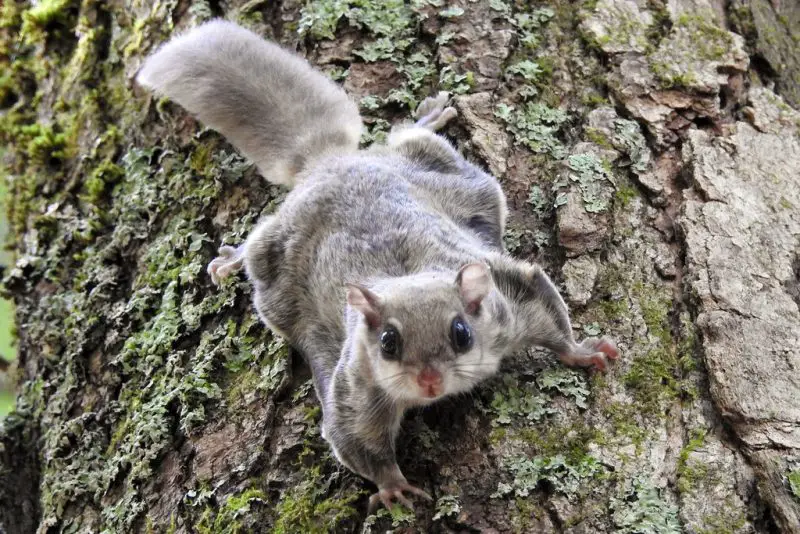
The Southern Flying Squirrel is North Carolina’s smallest tree squirrel and one of its few nocturnal rodents. This delicate, wide-eyed mammal is covered in soft gray-brown fur, with a creamy white belly and a flat, furred tail. It is easily recognized by the patagium, a thin membrane stretching between its front and hind legs that allows it to glide gracefully between trees. These glides can span over 150 feet, enabling the squirrel to move efficiently through the forest canopy without touching the ground.
Southern Flying Squirrels inhabit mature hardwood and mixed forests where old trees provide hollow cavities for nesting. They are particularly fond of oak, hickory, and beech forests rich in acorns and mast. During colder months, several individuals often share a single nest to conserve warmth, demonstrating a rare degree of social behavior among squirrels.
Their diet consists of a mix of nuts, seeds, berries, fungi, and occasionally insects or bird eggs. They are vital to forest health as they help disperse fungal spores that form symbiotic relationships with tree roots. Despite being common, their nocturnal lifestyle makes them rarely seen by people. However, they are often detected through nighttime chattering sounds or by the presence of nests in attic spaces.
Southern Flying Squirrels are highly active and curious creatures, using their large black eyes to navigate in low light. They play an essential ecological role as both seed dispersers and prey for owls, snakes, and raccoons. Their ability to glide, socialize, and adapt to changing habitats makes them one of North Carolina’s most fascinating native rodents.
Eastern Chipmunk (Tamias striatus)
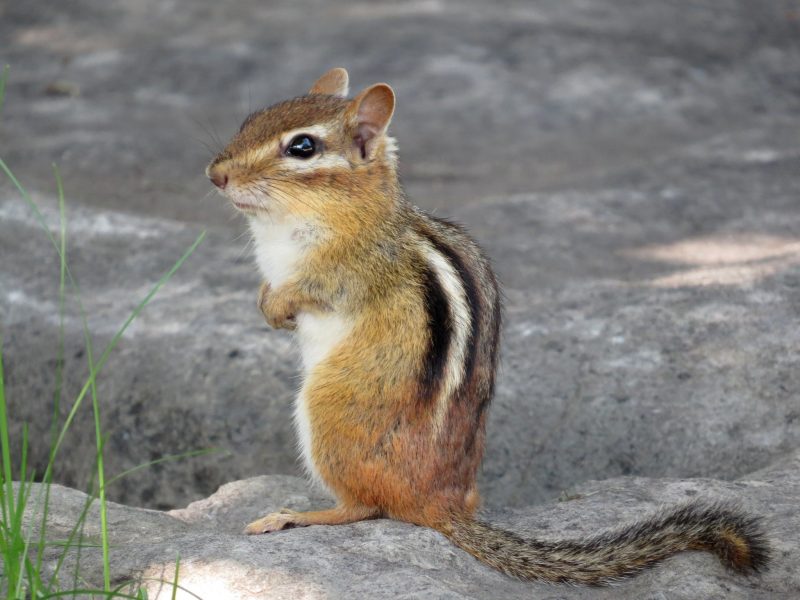
The Eastern Chipmunk is a small, ground-dwelling rodent found throughout North Carolina’s forests, gardens, and rocky hillsides. It has reddish-brown fur with five distinct dark stripes running down its back and sides, and its cheeks expand dramatically as it stuffs them with food. Though small, its quick movements, bright eyes, and distinct chirping calls make it one of the most charming and active rodents in the state.
Chipmunks construct elaborate underground burrow systems with separate chambers for nesting and food storage. These burrows can stretch several feet underground and are kept clean and dry. Above ground, chipmunks are diurnal and spend their days foraging for seeds, acorns, berries, and grains. They often collect food in their cheek pouches to transport it back to their burrow, creating an impressive winter stockpile.
Although chipmunks hibernate, they do not remain asleep all winter. Instead, they wake periodically to eat from their stored food reserves before returning to a torpid state. Their behavior helps them survive the colder months while remaining hidden from predators such as hawks, snakes, and foxes.
Eastern Chipmunks play a valuable role in their ecosystems by dispersing seeds and aerating the soil through their digging. They are solitary animals, highly territorial around their burrows, and will emit sharp “chip-chip” alarm calls when threatened. Their presence adds energy and liveliness to the forests and gardens of North Carolina.
White-footed Mouse (Peromyscus leucopus)
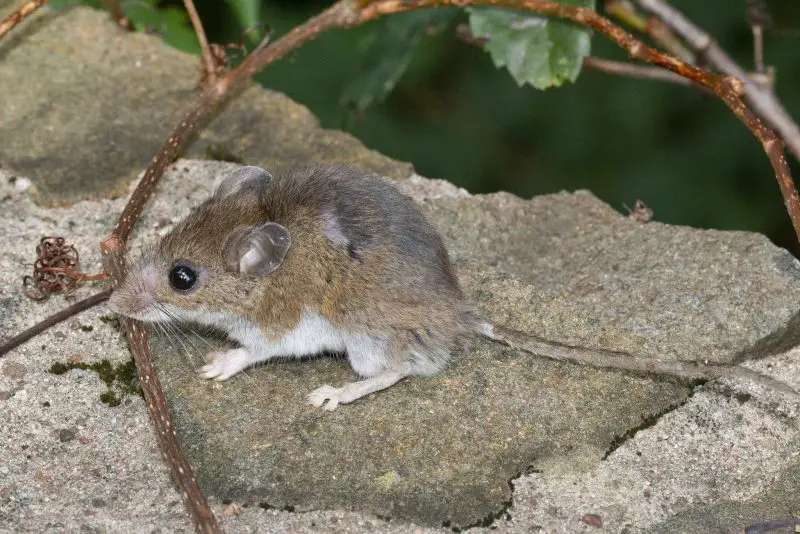
The White-footed Mouse is one of the most abundant and adaptable small mammals in North Carolina. It has large black eyes, a soft brown coat, white underparts, and distinctive white feet that give it its name. The tail is sharply bicolored, brown above and white below. This agile, nocturnal mouse thrives in wooded and brushy environments but can also be found near human dwellings, especially in rural areas.
It builds its nest in hollow logs, tree stumps, abandoned bird nests, or inside sheds and walls. These nests are constructed from shredded plant material, moss, and fur, providing excellent insulation. White-footed Mice are excellent climbers and can easily scale trees, vines, or even walls in search of food. Their omnivorous diet includes seeds, berries, insects, fungi, and occasionally small snails.
This species breeds several times a year, with females capable of producing multiple litters of four to six young annually. Their populations tend to fluctuate seasonally, increasing during summer and fall when food is plentiful. Because of their adaptability, White-footed Mice are common across both the Piedmont and mountain regions of North Carolina.
While important as a food source for owls, snakes, and small carnivores, White-footed Mice can also pose health risks when living near humans. They are known carriers of certain diseases such as hantavirus and Lyme disease (via infected ticks). Nonetheless, they play a crucial role in local ecosystems as seed dispersers and insect consumers.
Deer Mouse (Peromyscus maniculatus)
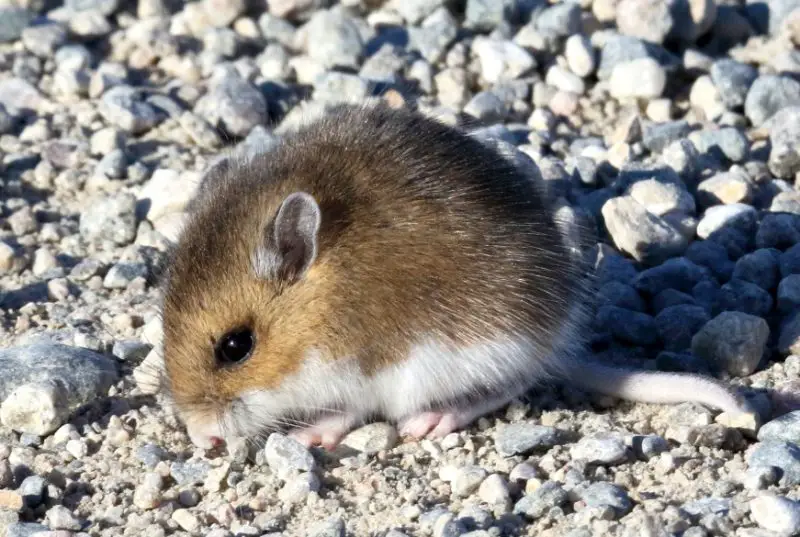
The Deer Mouse is a close relative of the White-footed Mouse but can be distinguished by its slightly smaller body, shorter tail, and proportionally larger ears. Its fur is brownish-gray on top with a clean white underside and feet, giving it a striking two-tone appearance. Found primarily in rural and forested areas of northern and western North Carolina, it prefers cool, dry environments like meadows, woodlands, and rocky slopes.
Deer Mice build nests in logs, tree stumps, burrows, or abandoned birdhouses. They are excellent jumpers and climbers, often foraging along fallen logs or shrubs. Like their relatives, they are nocturnal and rely on keen hearing and smell to navigate in darkness. They feed on seeds, nuts, fruits, and insects, sometimes storing food for winter use in underground chambers or crevices.
These mice are hardy survivors that remain active through the winter, using their thick fur to withstand cold temperatures. During this time, they may seek shelter in cabins, barns, or attics, leading to occasional encounters with humans. Their presence indoors is often marked by small droppings or gnawed materials.
Although considered pests in some settings, Deer Mice are vital components of North Carolina’s natural ecosystems. They serve as a major prey item for owls, weasels, snakes, and foxes, helping maintain predator populations. Their foraging and caching behaviors also contribute to seed distribution and forest renewal across the state.
Meadow Vole (Microtus pennsylvanicus)
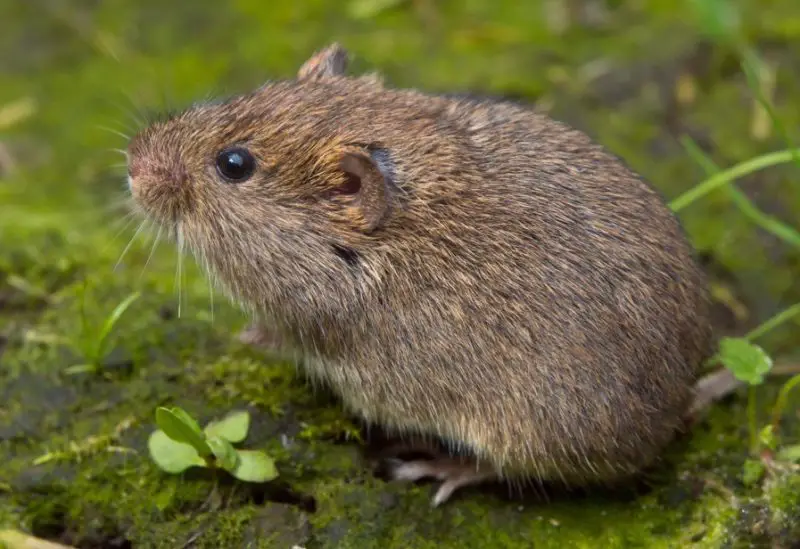
The Meadow Vole, often called the field mouse, is a small, stocky rodent that thrives in grassy habitats across North Carolina. It has dense brown fur with grayish underparts, a short tail, and small, barely visible ears. Unlike true mice, it has a blunt nose and compact build suited for life among thick vegetation. These voles are found in meadows, pastures, and marshy fields where moisture and dense grass cover offer protection from predators.
They are highly active creatures, maintaining a network of shallow tunnels and runways in the grass. These paths are often visible from above as thin, winding tracks leading to burrow entrances. Meadow Voles are active both day and night, though they are most commonly seen at dawn or dusk. Their diet consists mainly of grasses, roots, and seeds, which they clip close to the ground using their sharp incisors.
As prolific breeders, females can produce multiple litters each year, contributing to rapid population growth under favorable conditions. This makes them an essential food source for a wide range of predators, including hawks, owls, snakes, and foxes. In years of high population density, their presence can significantly influence predator activity and local ecosystem balance.
Although beneficial in natural systems, Meadow Voles can become pests when their burrowing damages lawns, orchards, and young trees. They may gnaw on bark during winter, girdling seedlings and ornamental plants. Still, their role in soil aeration and as a prey species ensures their continued importance in North Carolina’s ecosystems.
Woodland Vole (Microtus pinetorum)
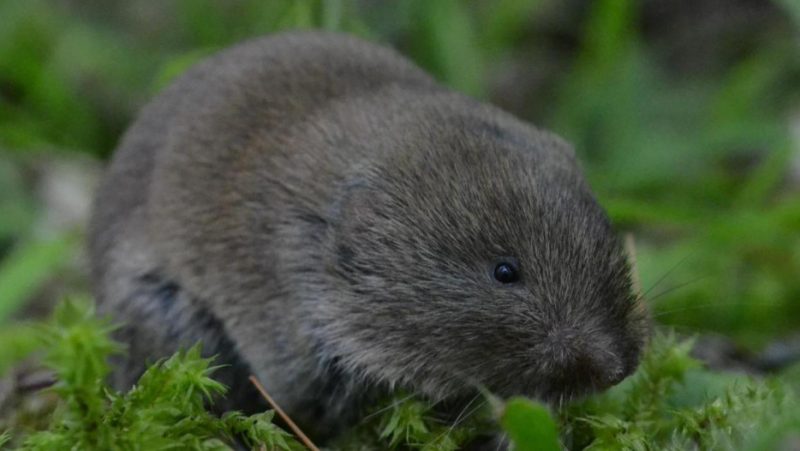
The Woodland Vole is a smaller and more secretive relative of the Meadow Vole. It has rich, velvety reddish-brown fur, a short tail, and small eyes and ears adapted to its subterranean lifestyle. This species spends much of its life underground, where it digs extensive burrow systems. It prefers moist forest floors, orchards, and shaded gardens where loose soil allows easy tunneling.
Unlike its meadow-dwelling cousin, the Woodland Vole rarely ventures to the surface. It feeds primarily on roots, tubers, bulbs, and seeds, making it an occasional nuisance to gardeners and orchard owners. They often chew the roots of shrubs and fruit trees, which can weaken or kill the plants over time. Despite this, they are important contributors to soil turnover and decomposition processes.
Woodland Voles form small family groups within their burrows, consisting of adults and their young. These underground nests are lined with fine grasses or shredded bark, offering protection from predators. Because of their secretive habits, most people never see them, though signs like tunnels near plant roots can reveal their presence.
Their populations are generally stable across North Carolina, especially in wooded regions and orchards. Though small, these voles serve as prey for snakes, owls, and foxes, maintaining their role in forest food webs. Their elusive behavior and soft, velvet-like fur make them one of the least observed yet most fascinating rodents in the state.
Hispid Cotton Rat (Sigmodon hispidus)
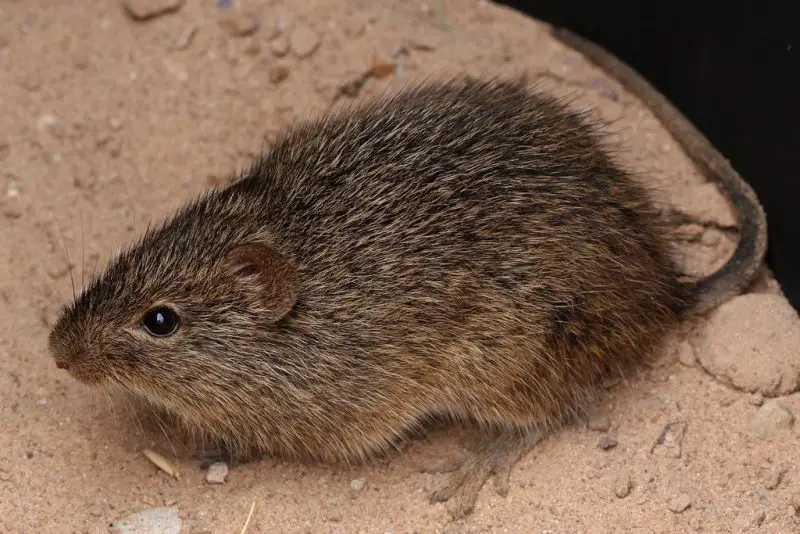
The Hispid Cotton Rat is a medium-sized rodent commonly found in grassy habitats and overgrown fields of North Carolina. It has coarse brownish-gray fur, a blunt snout, and a thick, scaly tail. The term “hispid” refers to the rough texture of its fur. Cotton Rats are often mistaken for large voles but are more closely related to true rats, though they have a more rounded body and shorter tail.
They build rounded nests made of dried grass and leaves on or slightly below the ground surface. These nests are usually hidden beneath tall grass or brush to provide cover from predators. Hispid Cotton Rats are primarily nocturnal but may be active during daylight hours in cooler weather. They feed on grasses, seeds, grains, and occasionally insects, which they gather along their runways.
Populations of cotton rats can fluctuate widely depending on food availability and climate. When conditions are favorable, their numbers can increase rapidly, providing abundant prey for hawks, owls, snakes, and carnivorous mammals. Their population booms are often followed by declines due to predation and resource limits, forming a natural ecological cycle.
In agricultural settings, Hispid Cotton Rats may cause some damage by feeding on crops or girdling young plants. However, they also help maintain healthy grassland ecosystems by trimming vegetation and dispersing seeds. Despite being common, they are secretive and rarely seen outside of brief movements through grassy cover.
Eastern Woodrat (Neotoma floridana)
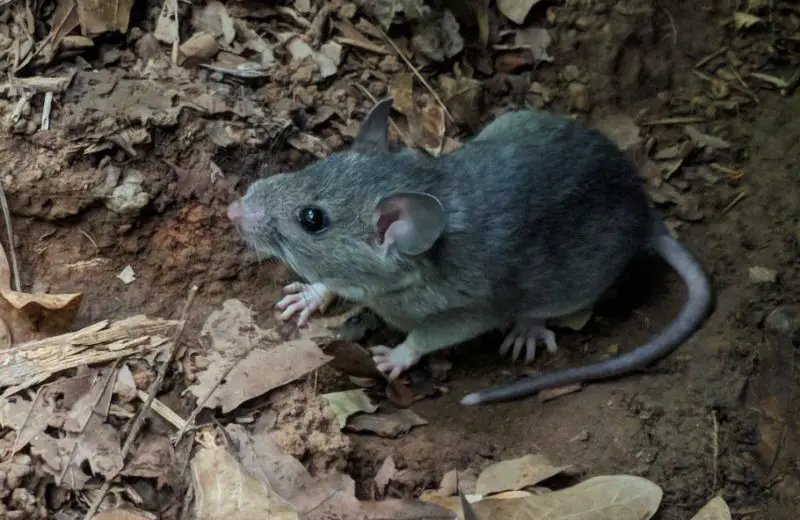
The Eastern Woodrat, sometimes called the “packrat,” is a large, bushy-tailed rodent native to the Piedmont and mountain regions of North Carolina. It has soft gray-brown fur, a pale belly, and large black eyes. Unlike the scaly-tailed Norway and roof rats, the woodrat’s tail is furry, resembling that of a small squirrel. Its curious and industrious nature makes it one of the most distinctive rodents in the state.
Eastern Woodrats are famous for constructing elaborate nests called “middens.” These are built from sticks, leaves, and debris, often placed among rocks, woodpiles, or abandoned buildings. Within the nest, they create separate chambers for sleeping and food storage. True to their “packrat” nickname, they collect shiny or unusual objects—such as bottle caps, foil, or small stones—to decorate their nests.
They are nocturnal and feed on nuts, seeds, leaves, and fruits. In rocky forests, they may also consume bark and fungi. Woodrats are solitary animals, with males defending territories from rivals. Their populations are densest in the western and central parts of North Carolina, especially in forested areas with abundant shelter and natural rock outcrops.
Despite their secretive habits, Eastern Woodrats play a significant ecological role. Their nests create microhabitats for insects and small reptiles, and they act as prey for owls, snakes, and carnivores. Unfortunately, habitat fragmentation and predation by feral cats have led to declines in some areas. Conservation efforts focus on preserving mature forest habitats to support healthy populations.
House Mouse (Mus musculus)
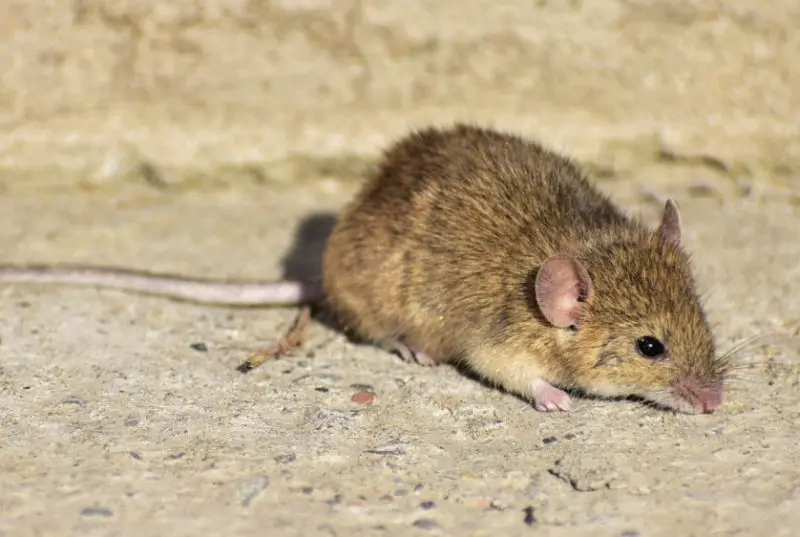
The House Mouse is one of the most widespread rodents in North Carolina, thriving in both urban and rural environments. It is a small, slender rodent with light brown to gray fur, large rounded ears, and a long scaly tail. Originally from Asia, this species has adapted exceptionally well to human settlements and can be found in homes, barns, warehouses, and even fields.
House Mice are opportunistic feeders, consuming grains, crumbs, seeds, and almost any available food source. They breed rapidly—females can produce up to ten litters per year—making infestations difficult to control once established. They build nests from shredded paper, fabric, and insulation materials, often hidden in wall voids, attics, or storage areas.
Although small, their presence can lead to serious problems. House Mice contaminate food with droppings and urine, gnaw electrical wiring, and damage stored goods. They are also potential carriers of bacteria and allergens that can affect human health. Their sharp teeth allow them to chew through wood and plastic, enabling them to access food supplies or nesting spots easily.
Despite their pest status, House Mice are highly intelligent and adaptable animals. They are capable of navigating complex environments and quickly learning to avoid traps or repellents. They serve as prey for owls, snakes, and small predators, maintaining their role in the broader food chain. In North Carolina, proper sanitation and exclusion remain the most effective ways to manage their populations.
Norway Rat (Rattus norvegicus)
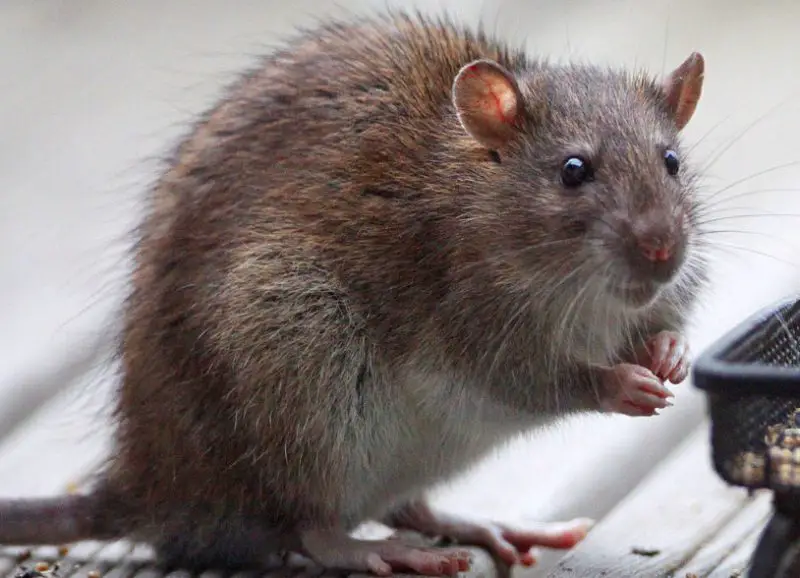
The Norway Rat, also known as the brown rat, is one of the largest and most robust rodents found in North Carolina. It has coarse brownish-gray fur, a blunt snout, small rounded ears, and a thick, scaly tail that is shorter than its body. Adult Norway Rats can grow up to 16 inches in length, including the tail, and weigh over a pound. Their sturdy build and adaptability have allowed them to thrive alongside humans for centuries.
These rats are primarily ground dwellers and prefer low-lying, damp environments. They are commonly found in urban areas, sewers, basements, barns, and near streams or ponds. Norway Rats are excellent burrowers, often digging extensive tunnel systems under buildings, sidewalks, or garbage piles. Their burrows usually have multiple entrances and are lined with shredded material for nesting.
Opportunistic feeders, Norway Rats consume virtually anything edible, including garbage, grains, meat scraps, and even small animals or insects. They are nocturnal and rely on their sharp senses of smell and taste to locate food. Because of their scavenging habits, they can transmit diseases such as leptospirosis, salmonella, and rat-bite fever through contaminated food or droppings.
Although viewed as pests, Norway Rats play an ecological role by cleaning up organic waste. However, their rapid breeding—up to 12 litters per year—and destructive gnawing habits make them a serious problem in both urban and rural settings. Effective control involves sanitation, exclusion, and population management to minimize health and property risks.
Roof Rat (Rattus rattus)
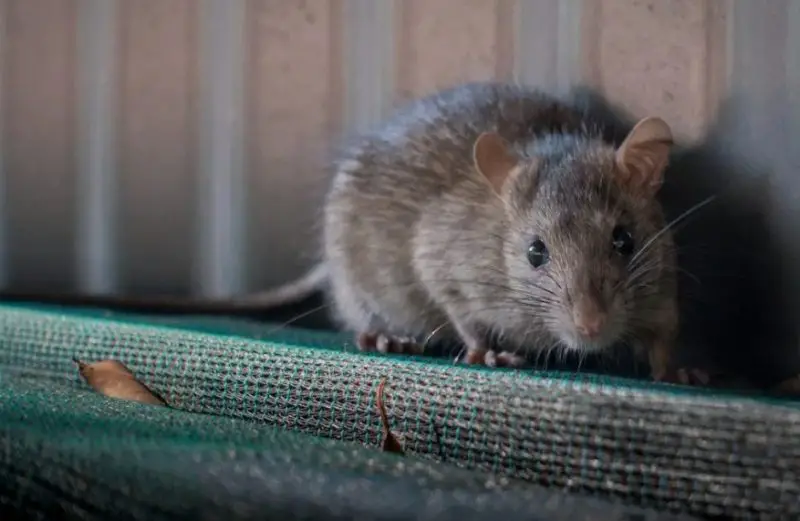
The Roof Rat, sometimes called the black rat or ship rat, is a sleeker and more agile species than the Norway Rat. It has glossy black or dark brown fur, a pointed snout, large ears, and a long, slender tail that exceeds the length of its body. Roof Rats are excellent climbers, often seen navigating power lines, tree branches, and building rafters with remarkable balance and precision.
They prefer warm, coastal regions and wooded suburban neighborhoods in eastern North Carolina. Unlike Norway Rats, which burrow underground, Roof Rats choose high nesting locations such as attics, trees, and roof spaces. They build loosely organized nests made of twigs, paper, and insulation, often hidden from plain sight.
Roof Rats are omnivores but show a preference for fruits, nuts, grains, and seeds. They are especially attracted to citrus, pecans, and stored grains, making them common agricultural pests in the state’s coastal plains. Being nocturnal, they are rarely seen during the day, but evidence of their presence includes droppings, gnaw marks, and scurrying noises in ceilings or walls.
In North Carolina, Roof Rats are most problematic in warmer months, particularly in coastal cities and towns. Their ability to reproduce quickly and spread disease makes them a public health concern. Managing infestations involves sealing entry points, trimming trees near rooftops, and keeping food sources tightly secured to discourage nesting.
Groundhog (Marmota monax)

The Groundhog, commonly known as the woodchuck, is one of North Carolina’s largest native rodents. It belongs to the marmot family and has a stout, muscular body covered in thick brown fur. Adults typically weigh between 5 and 10 pounds and have short legs, small ears, and a bushy tail. Their powerful claws and teeth make them well-adapted for digging.
Groundhogs are primarily found in open areas such as fields, meadows, woodland edges, and roadsides throughout the state. They dig complex burrow systems that may extend more than 30 feet underground, with multiple entrances and separate chambers for nesting and hibernation. These burrows help aerate the soil but can also undermine structures or damage gardens.
Herbivorous by nature, Groundhogs feed on a wide variety of vegetation, including grasses, clover, fruits, vegetables, and bark. They are most active during the day and often stand upright on their hind legs to survey for predators. In fall, they eat heavily to build fat reserves for hibernation, which lasts from late fall to early spring depending on weather conditions.
Groundhogs are an important part of North Carolina’s ecosystems, providing abandoned burrows for foxes, rabbits, and reptiles. However, they can become agricultural pests when feeding on crops or ornamental plants. Despite this, their presence in natural landscapes indicates a healthy balance between open habitat and wildlife activity.
Muskrat (Ondatra zibethicus)
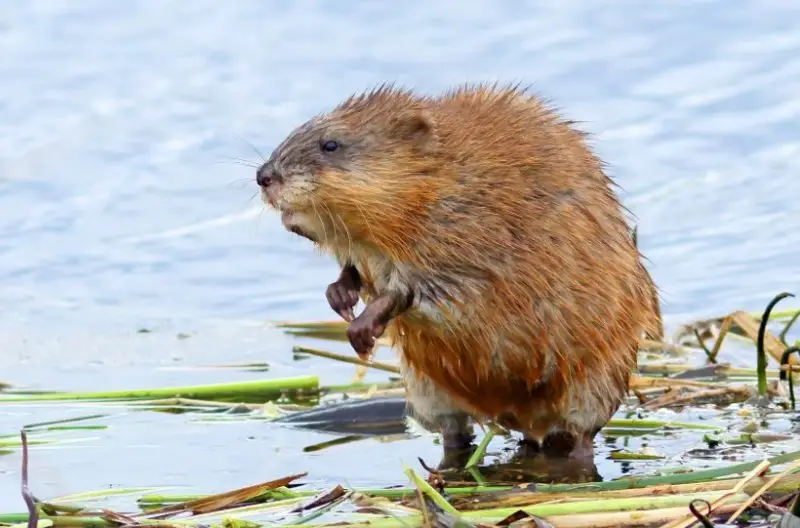
The Muskrat is a semi-aquatic rodent commonly found in North Carolina’s ponds, rivers, marshes, and wetlands. It has sleek, waterproof brown fur, partially webbed hind feet, and a long, vertically flattened tail used for swimming. Muskrats resemble small beavers but are smaller in size, typically weighing 2 to 4 pounds. Their dense underfur and oil glands keep them warm and dry while swimming in cold water.
These rodents are skilled builders and create dome-shaped lodges from cattails, mud, and reeds along the edges of waterways. They also dig burrows into banks, with underwater entrances for protection from predators. Muskrats are primarily nocturnal, although they can occasionally be seen during the day feeding near the water’s edge.
Their diet consists mostly of aquatic vegetation such as cattails, water lilies, and arrowhead plants, but they may occasionally consume small shellfish or insects. By feeding on aquatic plants, muskrats help control overgrowth in wetlands, maintaining open water habitats that benefit ducks, fish, and amphibians.
While muskrats play a beneficial role in wetland ecology, their burrowing activities can sometimes weaken levees, dikes, and pond banks. They are also valued for their pelts, which were historically an important part of North Carolina’s fur trade. Today, they remain a familiar sight in marshy areas and are appreciated for their contribution to wetland balance.
Marsh Rice Rat (Oryzomys palustris)
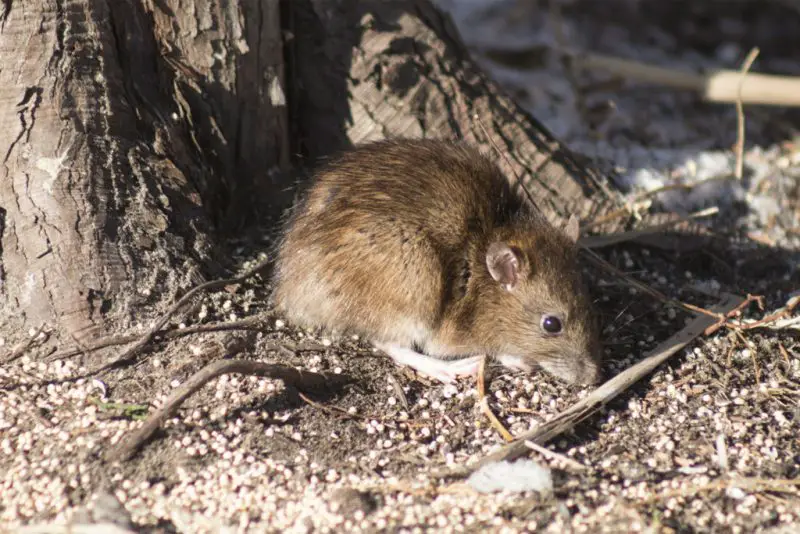
The Marsh Rice Rat is a medium-sized rodent adapted to North Carolina’s coastal marshes, swamps, and wet meadows. It has sleek brown fur, a white underside, and a long, scaly tail nearly as long as its body. This semi-aquatic species is an excellent swimmer, often seen foraging along the edges of tidal creeks and freshwater wetlands. Its body shape and water-resistant fur allow it to move easily through dense vegetation and shallow water.
These rats construct simple nests of grasses and reeds on elevated mounds or in dense marsh vegetation to stay above high tide levels. They are mostly nocturnal but may be active at dusk and dawn. Their diet is omnivorous, consisting of seeds, snails, aquatic insects, and crustaceans. This diverse feeding behavior helps them adapt to fluctuating food availability in coastal ecosystems.
Marsh Rice Rats are an essential part of wetland food webs, serving as prey for wading birds, snakes, and mammals such as raccoons. Their foraging also aids in seed dispersal and the cycling of nutrients in marsh environments. Despite their ecological importance, they occasionally enter homes near wetlands or coastal developments, especially after flooding events.
Populations of Marsh Rice Rats are most abundant in eastern North Carolina, particularly along the coastal plain. Their dependence on wetlands makes them sensitive to habitat loss caused by urban expansion and rising sea levels. Protecting these rodents also supports the broader conservation of the state’s fragile wetland ecosystems.
Tips for Identifying Rodents in North Carolina
Identifying rodents in North Carolina can be challenging because of their similar sizes and overlapping habitats. However, certain key features such as tail length, habitat preference, and activity patterns can help you determine which species you’re observing. By paying attention to a few physical traits and behaviors, you can quickly narrow down the possibilities.
Tail length is one of the most reliable indicators. Mice and rats typically have long, scaly tails that are equal to or longer than their bodies, helping them balance while climbing or moving quickly across open ground. In contrast, voles and woodrats have shorter, fur-covered tails, an adaptation for life in burrows or dense vegetation. Squirrels, on the other hand, have long, bushy tails that distinguish them easily from other rodent types.
Habitat also provides strong clues. If you encounter rodents near wetlands, ponds, or marshes, you’re likely seeing aquatic species such as muskrats or marsh rice rats, which are strong swimmers and prefer water-rich environments. In wooded areas and forests, voles, flying squirrels, or chipmunks are common, especially where there are mature trees and plenty of leaf litter. Inside buildings, attics, or barns, the culprits are usually house mice, roof rats, or Norway rats, all of which are well-adapted to living alongside humans.
Activity patterns can further help with identification. Rodents seen during daylight hours are typically squirrels or chipmunks, both of which are diurnal and active when temperatures are mild. Those active at night—especially if you hear scratching or scurrying sounds in walls—are more likely to be mice, rats, or flying squirrels. Observing the time of activity, along with physical traits and habitat, will give you a clear idea of which rodent species you’re dealing with in North Carolina.
FAQs About Rodents in North Carolina
Are rodents active year-round in North Carolina?
Yes. While some species like chipmunks and groundhogs hibernate, most—including rats and mice—remain active year-round, especially indoors or in milder coastal climates.
Which rodents cause the most problems in homes?
House mice, Norway rats, and roof rats are the most common household pests. They can chew wires, contaminate food, and carry diseases.
Are any rodents protected in North Carolina?
Yes. Some species, like the Allegheny woodrat (a relative of the Eastern woodrat), are protected due to habitat loss and population decline.
Do flying squirrels live across the entire state?
Yes, the Southern Flying Squirrel is found statewide, from coastal areas to the mountains, as long as mature forests are available.
How can I keep rodents out of my home?
Seal small openings, store food securely, and remove clutter or nesting materials. Trim trees away from your house to prevent roof rats from gaining access.

